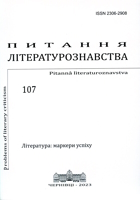Prohibited Literature
Prohibited Literature
Author(s): Gaga LomidzeSubject(s): Language and Literature Studies, Studies of Literature, Theory of Literature, Georgian literature
Published by: Чернівецький національний університет імені Юрія Федьковича
Keywords: literary censorship; Georgian literature; modernist literature; postmodernist literature; forbidden books;
Summary/Abstract: In anti-democratic systems, free-thinking people are always feared. Poets are free people. That is why the main book of Georgians – “The Knight in the Panther’s Skin” was probably persecuted not only in the 12th century, but also centuries later. It is enough to remember the Catholicos Patriarch of Georgia, Anton I, who threw the “The Knight in the Panther’s Skin” printed in Tbilisi’s first printing house into the Mtkvari river, “as a book harmful to readers, poisonous to the minds and feelings of Christians”. There are only a few main reasons why literary works or works of art in general are banned. Motives are essentially sexual, religious, political, or moral. But the motive as such belongs to a variable category – we cannot say about any motive that it is universal and does not change according to time and space – or more precisely, era and countries. To anyone who has thought about this matter, it will be self-evident that temporal categories are always changing. Michel Foucault has already told us that the concepts of mad and abnormal are constantly changing in different times, under different countries and governments. Times and values change, but the mechanisms of prohibition remain the same. And if before the state directly interfered in what could be considered appropriate, from the point of view of political or other type of correctness, today it already imposes the mass and controls the validity criteria from its point of view as much as possible.
Journal: Питання літературознавства
- Issue Year: 2023
- Issue No: 107
- Page Range: 67-79
- Page Count: 13
- Language: English

